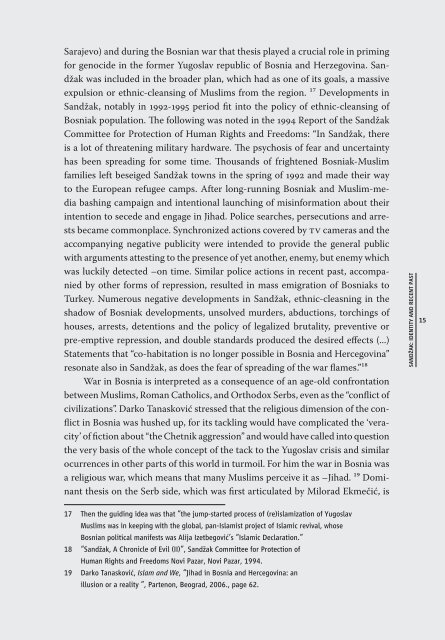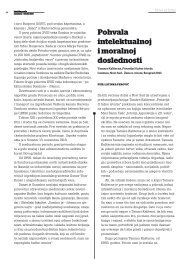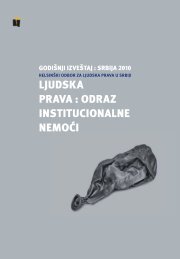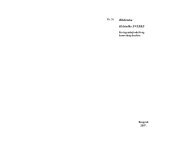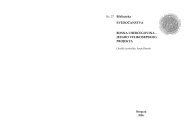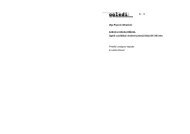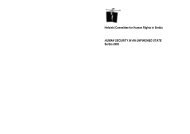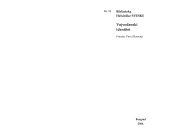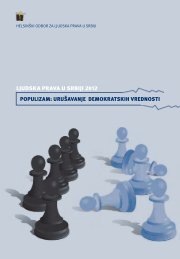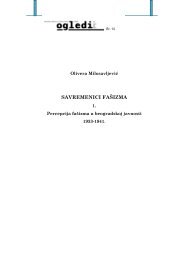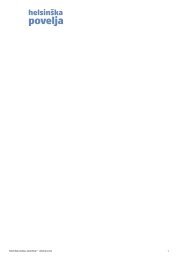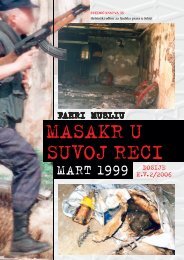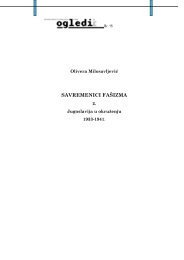r@mc @j hcdmshsds t oqnbdot rs@qnf h mnunf - Helsinki ...
r@mc @j hcdmshsds t oqnbdot rs@qnf h mnunf - Helsinki ...
r@mc @j hcdmshsds t oqnbdot rs@qnf h mnunf - Helsinki ...
Create successful ePaper yourself
Turn your PDF publications into a flip-book with our unique Google optimized e-Paper software.
Sandžak: identity and recent past<br />
Sarajevo) and during the Bosnian war that thesis played a crucial role in priming<br />
for genocide in the former Yugoslav republic of Bosnia and Herzegovina. Sandžak<br />
was included in the broader plan, which had as one of its goals, a massive<br />
expulsion or ethnic-cleansing of Muslims from the region. ¹⁷ Developments in<br />
Sandžak, notably in 1992-1995 period fit into the policy of ethnic-cleansing of<br />
Bosniak population. The following was noted in the 1994 Report of the Sandžak<br />
Committee for Protection of Human Rights and Freedoms: “In Sandžak, there<br />
is a lot of threatening military hardware. The psychosis of fear and uncertainty<br />
has been spreading for some time. Thousands of frightened Bosniak-Muslim<br />
families left beseiged Sandžak towns in the spring of 1992 and made their way<br />
to the European refugee camps. After long-running Bosniak and Muslim-media<br />
bashing campaign and intentional launching of misinformation about their<br />
intention to secede and engage in Jihad. Police searches, persecutions and arrests<br />
became commonplace. Synchronized actions covered by tv cameras and the<br />
accompanying negative publicity were intended to provide the general public<br />
with arguments attesting to the presence of yet another, enemy, but enemy which<br />
was luckily detected –on time. Similar police actions in recent past, accompanied<br />
by other forms of repression, resulted in mass emigration of Bosniaks to<br />
Turkey. Numerous negative developments in Sandžak, ethnic-cleasning in the<br />
shadow of Bosniak developments, unsolved murders, abductions, torchings of<br />
houses, arrests, detentions and the policy of legalized brutality, preventive or<br />
pre-emptive repression, and double standards produced the desired effects (...)<br />
Statements that “co-habitation is no longer possible in Bosnia and Hercegovina”<br />
resonate also in Sandžak, as does the fear of spreading of the war flames.”¹⁸<br />
War in Bosnia is interpreted as a consequence of an age-old confrontation<br />
between Muslims, Roman Catholics, and Orthodox Serbs, even as the “conflict of<br />
civilizations’’. Darko Tanasković stressed that the religious dimension of the conflict<br />
in Bosnia was hushed up, for its tackling would have complicated the ‘veracity’<br />
of fiction about “the Chetnik aggression” and would have called into question<br />
the very basis of the whole concept of the tack to the Yugoslav crisis and similar<br />
ocurrences in other parts of this world in turmoil. For him the war in Bosnia was<br />
a religious war, which means that many Muslims perceive it as –Jihad. ¹⁹ Dominant<br />
thesis on the Serb side, which was first articulated by Milorad Ekmečić, is<br />
SANDŽAK: IDENTITY AND RECENT PAST<br />
15<br />
17 Then the guiding idea was that “the jump-started process of (re)islamization of Yugoslav<br />
Muslims was in keeping with the global, pan-Islamist project of Islamic revival, whose<br />
Bosnian political manifests was Alija Izetbegović’s “Islamic Declaration.”<br />
18 “Sandžak, A Chronicle of Evil (II)”, Sandžak Committee for Protection of<br />
Human Rights and Freedoms Novi Pazar, Novi Pazar, 1994.<br />
19 Darko Tanasković, Islam and We, “Jihad in Bosnia and Hercegovina: an<br />
illusion or a reality ”, Partenon, Beograd, 2006., page 62.


